
WELCOME TO SHIPSPOTTING.COM
HUGHES GLOMAR EXPLORER - IMO 7233292
Photo
details
Description:
Owned lside with copyright
photo late Frank Parsons
late 1973
Built 1973 as a drilling ship Hughes Glomar Explorer the Hughes Corporation for the CIA. However she was not used for drilling but as a platform to raise a USSR Nato category Golf class diesel ballistic missle submarine which had sunk in the Pacific.
This was achieved under the usual cloud of secrecy however the reports to date state the submarine broke up as it was being raised, but this was possibly propoganda knowing how reliable any press releases from the CIA or US military are.It was a major Cold War success for the USA.However as the USSR had a family of spies in the USN no doubt they were kept informed in real time !
She was aquired by the USN in 1976 and renamed USNS Glomar Explorer AG-193.
Eventually she was sold by the USN and rebuilt and renamed
-78 GLOMAR EXPLORER - 05 GSF EXPLORER
launched 14/11/1972
Vessel
particulars
Former name(s):
- Glomar Explorer (Until 2005 May)
- Hughes Glomar Explorer (Until 1978 Jan)
AIS Position
of this ship
There is no AIS Position Data available for this ship!
Would you like to add AIS Coverage?

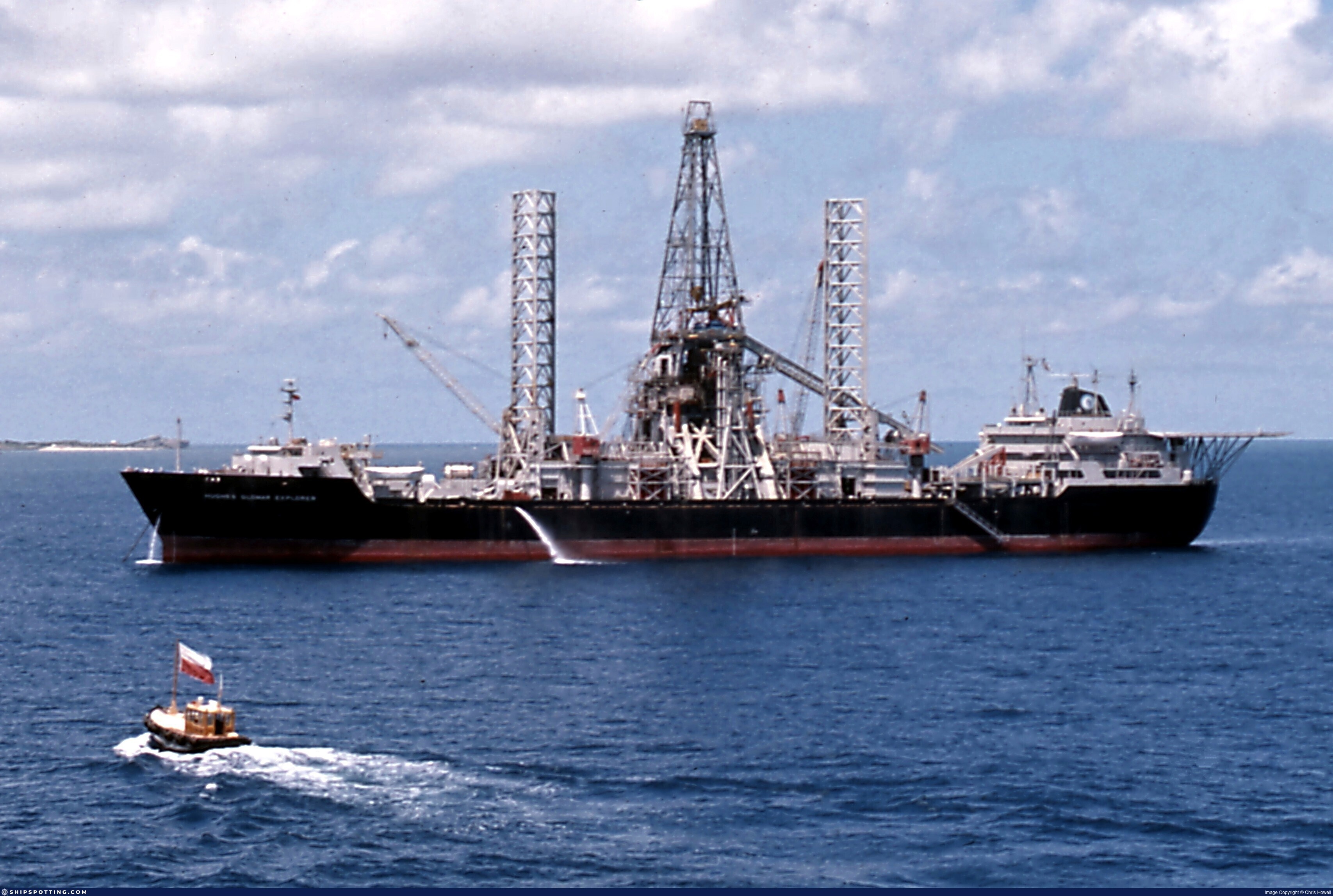

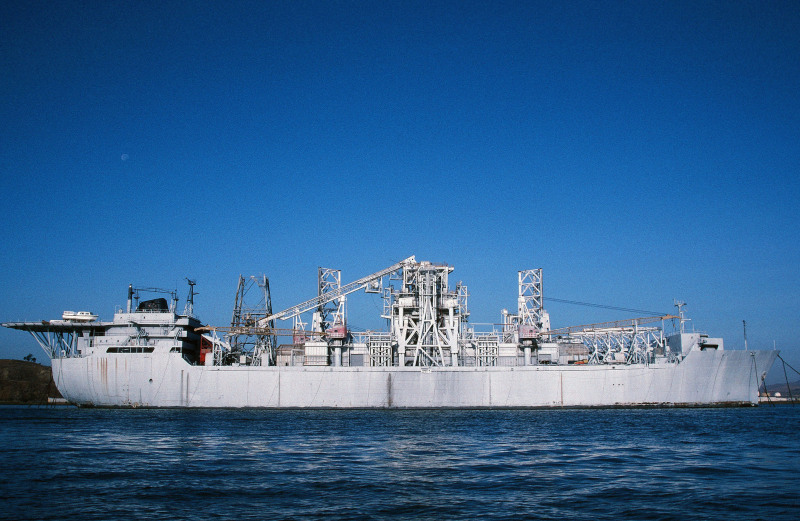
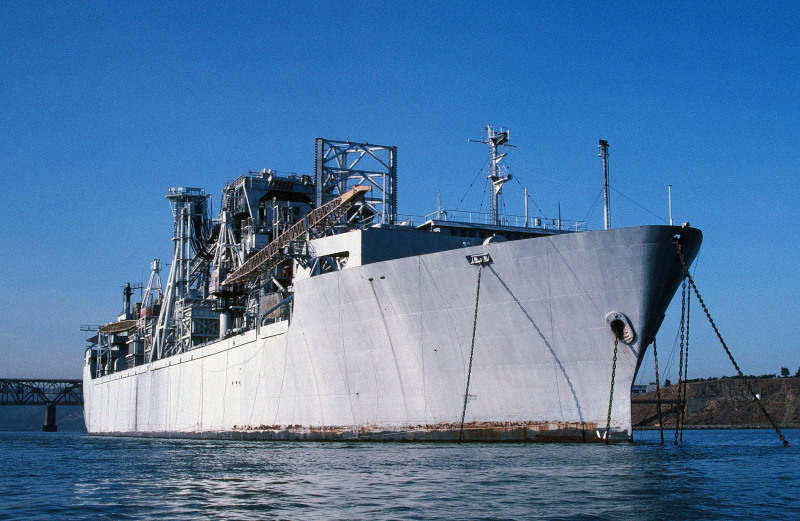
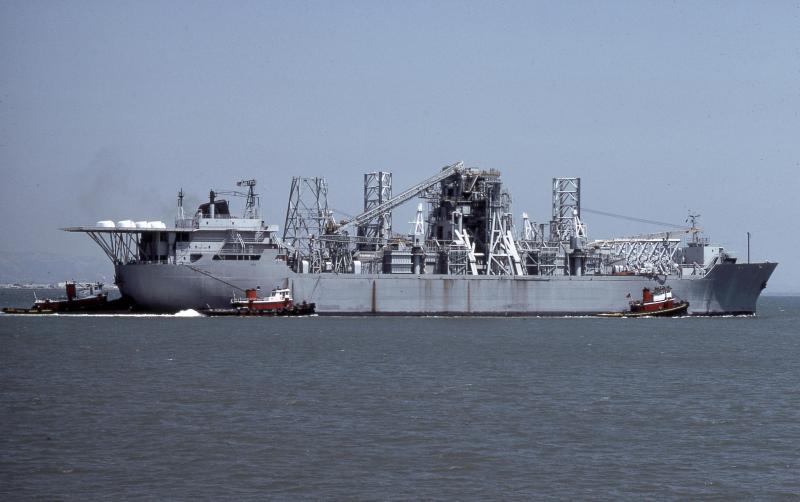
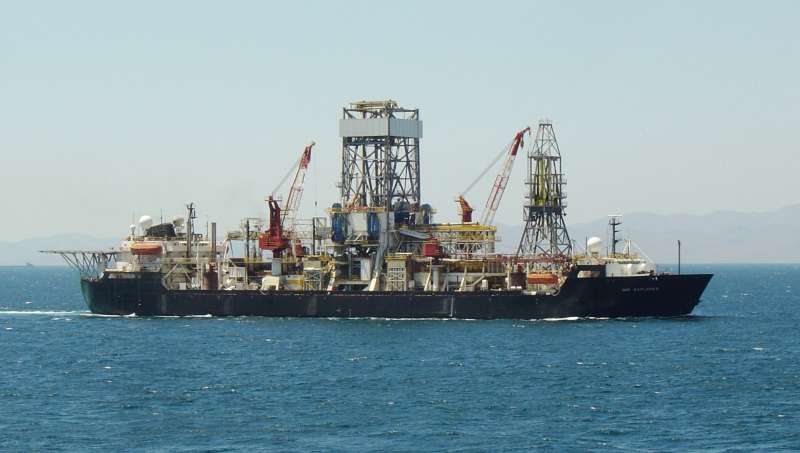
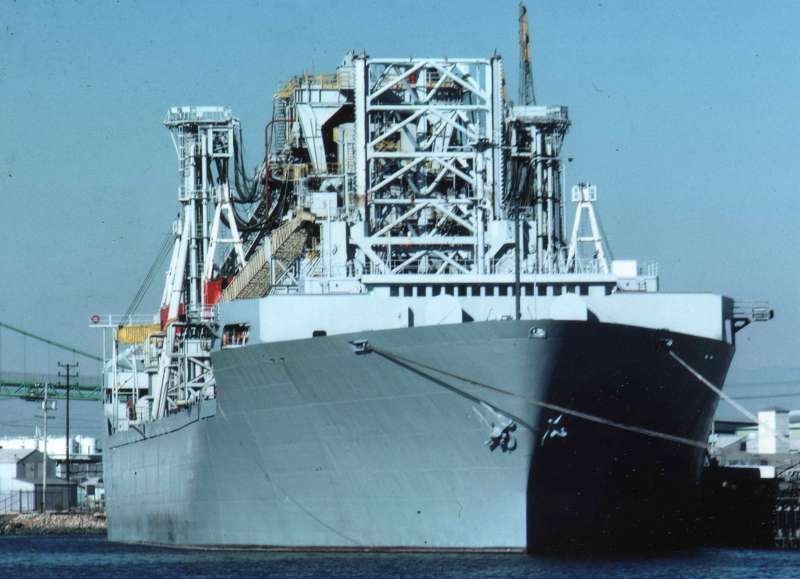


COMMENT THIS PHOTO(2)
According to Mark Riebling, in "WEDGE: The Secret War Between the FBI and CIA," it took five years to build the Glomar Explorer, at a cost of $70 million.
Mission heart of this vessel was a 199-ft. long by 75 ft. wide moon pool in the middle of the hull, with huge doors that opened the belly to the ocean. It also had spider-like legs above and below sea surface and her tallest point was a 23-story (263 ft.) derrick in the center of the deck.
Not to give away the exact location of the sunken sub (which the Russians did not know), the much smaller Glomar Challenger was used as a decoy operating at another location.
total length of Hughes Glomar Explorer: 618 ft.
the contract to build the vessel was awarded to Sun Shipbuilding & Dry Dock, Chester, PA, in April 1971.
Hughes Mining Barge HMB-1 was built at Todd Shipyard in San Diego, Calif. under the direction of Lockheed Missiles & Space Company. weight: 4,700 tons; 180 ft. long and had a 70-ft. high retractable roof.
Edit
comment
The sunken submarine was located in 16,500 feet of water. Mizar (AGOR 11) took part in the search, as did the specialized "research" submarine USS Halibut (SSN 587). It is possible that the "research" sub Seawolf (SSN 575) also took part in the search (see section F.8 for information on US covert operations submarines).
The CIA ran an operation to recover the sunken submarine. The recovery effort centered on Hughes Glomar Explorer, a 63,000 ton deep-sea salvage vessel built for the progect. The ship was built under the "cover story" that she was a deep-sea mining ship, intended to recover "manganese nodules" from the ocean floor. The ship was supposedly being built for the Summa Corporation at the direction of Howard Hughes for use by his Global Marine Development Inc. At the same time the "Hughes Mining Barge" was built. The barge, commonly known as HMB-1, was a submersible barge intended to carry the "claw" to be used in the recovery effort; it would also be used to hide the recovered submarine.
Hughes Glomar Explorer was equipped with a massive hoisting mechanism amidships and a "moon pool", a large internal underwater hangar to provide access to the ocean. The submarine was to be hoisted by a massive claw, which was stored in HMB-1. After Hughes Glomar Explorer and HMB-1 left port, the barge submerged, manuvered under Glomar Explorer, and the claw was hoisted into the moon pool. Glomar Explorer arrived on the recovery site 4 July 1974 and conducted salvage operations for the next month. If the entire submarine had been recovered it would have been stored in HMB-1 after the salvage. In the event (according to the story released to the public), only the forward 38 feet of the submarine was recovered. The section included two nuclear-tipped torpedoes, various cipher/code equipment and 8 dead crewmen. The recovered section was small enough to be brought into the moon pool, where it was analysed and disected. The dead Soviet sailors were buried at sea. It is possible that the entire submarine was recovered and the story about only the bow being recovered was futher "cover".
After the recovery Hughes Glomar Explorer was transferred to the Navy on 3 Sept 1976 and designated AG 193. The vessel is not officially assigned a name, but is commonly referred to Glomar Explorer. She was transferred to the Maritime Administration on 17 Jan 1977 and laid up at Suisun Bay, CA. The Navy attempted to sell the ship, but failed. In June, 1978 she was leased to Global Marine Development Inc. for commercial use. That lease was terminated in 1980. In 1979 it was proposed that the ship be transferred to the National Science Foundation for use as a deep-sea drilling ship, but that effort was not funded. The ship was returned to Navy custody on 25 April 1980 and transferred to the Maritime Administration on the same day for layup at Suisun Bay. She remained in layup for the next 16 years. During August, 1996 it was announced that Global Marine had leased Glomar Explorer from the Navy for 30 years. The ship left the mothball fleet 5 November 1996 to be totally reconditioned and converted to a drill ship.
HMB-1 was laid up after the recovery, but was transferred to the Environmental Protection Agency at some point. She was returned by the EPA in 1982, officially to be laid up in reserve. It now seems likely that it was then employed as the "mother ship" for the stealth ship Sea Shadow, a purpose for which it was employed during the 1990's. At some point HMB-1 was converted from an submersible barge with access from the top into a covered floating drydock with access from one end. It is currently in storage, with Sea Shadow inside.
Edit
comment